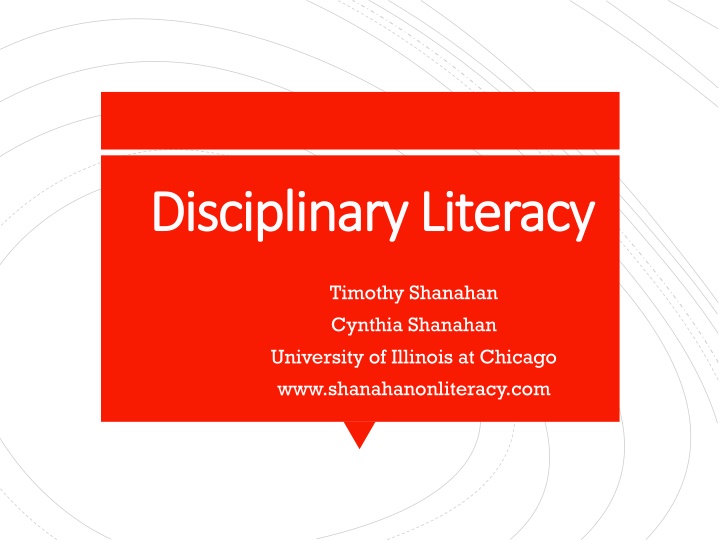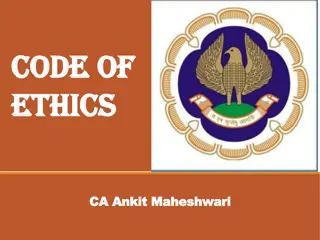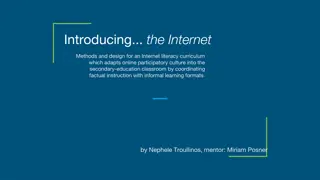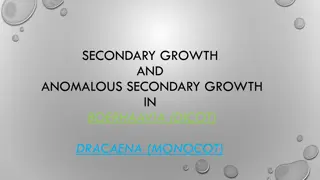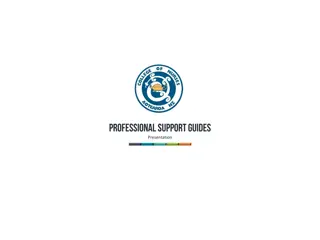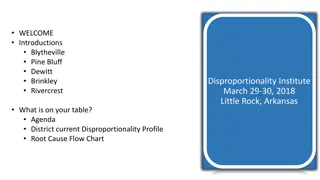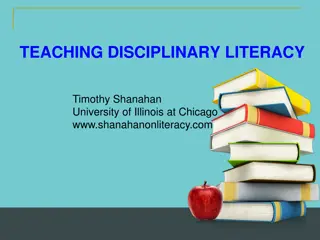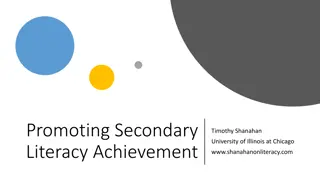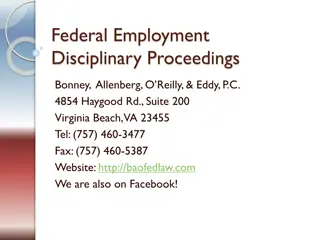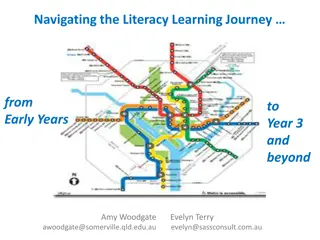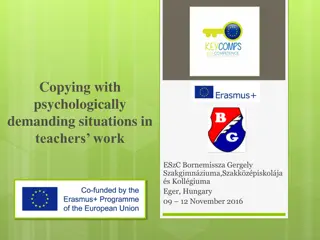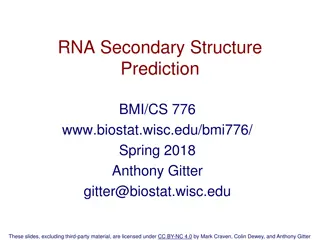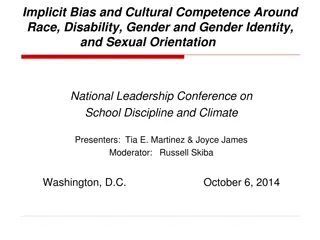Addressing Secondary Literacy Challenges Through Disciplinary Literacy Strategies
Explore the complexities of secondary literacy education focusing on struggling readers and those needing remediation in disciplinary classrooms. Learn about the ineffective remedial approaches, the importance of accountable reading and writing classes, and the potential benefits of content area reading instruction in improving student outcomes.
Download Presentation

Please find below an Image/Link to download the presentation.
The content on the website is provided AS IS for your information and personal use only. It may not be sold, licensed, or shared on other websites without obtaining consent from the author.If you encounter any issues during the download, it is possible that the publisher has removed the file from their server.
You are allowed to download the files provided on this website for personal or commercial use, subject to the condition that they are used lawfully. All files are the property of their respective owners.
The content on the website is provided AS IS for your information and personal use only. It may not be sold, licensed, or shared on other websites without obtaining consent from the author.
E N D
Presentation Transcript
Disciplinary Literacy Disciplinary Literacy Timothy Shanahan Cynthia Shanahan University of Illinois at Chicago www.shanahanonliteracy.com
The first of these has to do with our striving readers These are the bottom 25-30% of high school students who do not meet current standards, sometimes fail to graduate, rarely enroll in college, and often struggle in the workplace There are two major problems in secondary literacy Remedial instruction has not been adequate to meet their needs
Research suggests that a better solution may be to enroll these students in classes that require accountable reading and writing (Bohr, 1994) There are two major problems in secondary literacy (cont.) Too often teachers in such classes either avoid text because of the presence of these students or use text but provide little support
The second problem has to do with a significant portion of those students who are not identified as strugglers ~30% of students meet current standards, graduate from high school, start college but require remediation, usually don t complete college, and also struggle in the workplace Two Secondary Literacy Problems (cont.)
These somewhat more advantaged readers are not usually assigned to remedial courses Two Secondary Literacy Problems (cont.) But they don t benefit sufficiently from an emphasis on general reading strategies and they also are penalized when teachers avoid text
Two Potential Two Potential Avenues to Avenues to Success Success Content area reading Disciplinary literacy
Content area reading instruction provides students with comprehension and study strategies aimed at improving their classroom performance Has long history in education Many secondary teachers have preparation in content area reading instruction Lots of books and resources for teachers Nevertheless, great resistance to adopting these practices into disciplinary classrooms Content Area Content Area Reading Reading Instruction Instruction
Disciplinary literacy is an approach that emphasizes teaching students to read in the ways that disciplinary experts do Each discipline has particular literate practices that are based on the knowledge of each discipline and its empirical methods Has a shorter history than content area reading Often misunderstood by educators, so poor pedagogical and policy choices are often made Nevertheless, these practices are beginning to make headway in American classrooms, particularly in social studies Disciplinary Disciplinary literacy literacy instruction instruction
Content area reading and disciplinary literacy are seen as synonymous (Dunkerly-Bean & Bean, 2016). Content area reading and disciplinary literacy are not conceived as the same thing, but the methods and outcomes are the same. Wide Confusion Content area reading and disciplinary literacy are competing. You either use one or the other.
Use of the terms content area reading and disciplinary literacy since 2006.
This presentation will explain disciplinary literacy Will compare it with the better known content area reading Will explore the arguments about the two approaches Understanding disciplinary literacy
Each discipline has its own language, purposes, and ways of using text, and students should understand these aspects of a discipline s literacy practices (Shanahan & Shanahan, 2008) There are special skills and strategies needed to make complete sense of texts from the disciplines Disciplinary Disciplinary Reading Reading Instruction Instruction As students begin to confront these kinds of texts (especially in middle school and high school), instruction must facilitate their understanding of what it means to read disciplinary texts
Increasing Specialization of Literacy Disciplinary Literacy Intermediate Literacy Basic Literacy
Content Area Reading Disciplinary Literacy Source Reading experts since 1920s Wider range of experts since 1980s
In 1920s, the idea of every teacher a teacher of reading was first raised Fundamental idea is that reading experts know the necessary reading skills and that those should be taught by everyone across the curriculum Leads to the development of lots of general study skills approaches and strategies: SQ3R, KWL, three- level guides, icharts, etc. Research focuses on effectiveness of these instructional routines in making students better students (content reading emphasis is largely pedagogical in nature) Sources of Sources of Content Area Content Area Reading Reading
Studies that compare expert readers with novices (Bazerman, 1985; Geisler, 1994; Wineburg, 1991, etc.) Studies that compare expert readers in different disciplines (Shanahan, Shanahan, & Misischia, 2011). Functional linguistics analyses of the unique practices in creating, disseminating, evaluating knowledge (Fang, 2004; Halliday, 1998; Schleppegrell, 2004, etc.) Sources of Sources of Disciplinary Disciplinary Literacy Literacy
Sam Wineburg, 1991 Sourcing: considering the author and author perspective Contextualizing: placing the document/info within its historical period and place Example of Example of Expert Reader Expert Reader Methodology Methodology Corroboration: evaluating information across sources
Content Area Reading Disciplinary Literacy Source Reading experts since 1920s Wider range of experts since 1990s Nature of skills Generalizable Specialized Comparing Content Comparing Content Area Reading and Area Reading and Disciplinary Literacy Disciplinary Literacy
Content area reading has emphasized the teaching of generalizable skills and activities that can be used in all or most reading in any discipline: KWL Summarization SQ3R Previewing Content area Content area reading reading Word maps Brainstorming Frayer model Notetaking 3-level guides QAR DR-TA I-Charts Reciprocal teaching
Disciplinary literacy emphasizes the teaching of specialized skills and activities and disciplinary insights Idea is to consider the learning demands of a subject matter Example: textbook use Disciplinary Disciplinary literacy literacy Science - Essential History - Antithetical Literature - Irrelevant
Chemistry Note Chemistry Note- -taking taking Atomic Expression Substances Properties Processes Interactions
Focus is on teaching/study techniques: 1. make connections among concepts 2. construct graphic organizers 3. brainstorm 4. semantic maps 5. word sorts 6. rate knowledge of words 7. analyze semantic features of words 8. categorize or map words 9. develop synonym webs Content area Content area reading: reading: Vocabulary Vocabulary
Focus is on specialized nature of vocabulary of the subjects Science: Greek and Latin roots (precise, dense, stable meanings that may be related and recoverable) History: metaphorical terms, words/terms with a political point of view Literature: focus on terms of sensory description, emotion, relationships Disciplinary Disciplinary literacy: literacy: Vocabulary Vocabulary
Content Area Reading Disciplinary Literacy Source Reading experts since 1920s Generalizable Wider range of experts since 1990s Specialized Nature of skills Focus Use of reading and writing to study/learn information How literacy is used to make meaning within a discipline Comparing Content Comparing Content Area Reading and Area Reading and Disciplinary Literacy Disciplinary Literacy
The focus is on learning from text The idea is not to read like a chemist, but to know how to study books (including chemistry books) Emphasis on literacy learning tools: Focus of Focus of Content Area Content Area Reading Reading Exit notes Dictionary skills Advanced organizers Response journals Internet Readability analysis
The focus is on the specialized problems of a subject area Disciplines represent cultural differences in how information is used, the nature of language, demands for precision, role of author in interpretation, etc. Focus of Focus of Disciplinary Disciplinary Reading Reading Instruction is more like enculturation than direct instruction in a strategy
Content Area Reading Disciplinary Literacy Source Reading experts since 1920s Generalizable Wider range of experts since 1990s Specialized Nature of skills Focus Use of reading and writing to study/learn information How literacy is used to make meaning within a discipline Comparing Content Comparing Content Area Reading and Area Reading and Disciplinary Literacy Disciplinary Literacy Sequence of instruction Begin with strategy Begin with what students should learn
Strategy is the central point Teachers need to identify text that the strategy fits Strategy is introduced Strategy is demonstrated Strategy is practiced Strategy is used on a target text Content area reading Strategy use is evaluated Teachers need to make sure they do not lose sight of the information students were supposed to learn
Teacher identifies what should be learned and chooses text emphasizing that knowledge Teacher determines what kind of disciplinary thinking is necessary to understand the text Teacher discusses and demonstrates the kind of thinking necessary to learn targeted information Students practice that kind of thinking Students use that thinking to understand text Students understanding of the text is evaluated Teachers need to be aware of any other problems students are having with text and how they might be addressed Disciplinary Literacy
Content Area Reading Disciplinary Literacy Source Reading experts since 1920s Generalizable Wider range of experts since 1990s Specialized Nature of skills Comparing Content Comparing Content Area Reading and Area Reading and Disciplinary Literacy Disciplinary Literacy Focus Use of reading and writing to study/learn information How literacy is used to make meaning within a discipline Sequence of Instruction Students Begin with strategy. Begin with what students should learn Whole distribution Remedial
Content area reading is promoted for all students But the strategies that are taught tend to work best with younger and lower level readers with little evident benefit for average and higher readers Content area Content area reading tends to reading tends to be remedial be remedial Teachers often won t use approaches that don t have a wider impact than that
Effectiveness is beginning to be tested, with promising results. (Goldman et. al Reading for Understanding Project (2017, 2019); De la Paz et. al 2005, 2012, 2016; Hynd, Holschuh, & Hubbard, 2004; Reisman, 2012; Rudd, Greenbowe, Hand, & Legg , 2001; Shanahan et al 20016) The nature of the activities that have been developed so far suggest a wide range of learning benefits. Disciplinary Disciplinary reading can be reading can be beneficial to top beneficial to top readers, too readers, too
What is main character like at the beginning of the story? What is the main character like at the end of the story? How has he or she changed? Crisis Given this character change, what do you think the author wanted you to learn? ______________________________________________________________________________ __________________________________________________________________________
History Events Chart History Events Chart TEXT WHO? WHAT? WHERE? WHEN? WHY? 1 Relation: 2 Relation: 3 Relation 4 Main point:
Content Area Reading Disciplinary Literacy Source Reading experts since 1920s Generalizable Wider range of experts since 1990s Specialized Nature of skills Comparing Content Comparing Content Area Reading and Area Reading and Disciplinary Literacy Disciplinary Literacy Students Focus Use of reading and writing to study/learn information How literacy is used to make meaning within a discipline Remedial Whole distribution Texts Sometimes encourages use of literary text Only focuses on disciplinary text
Often promotes reading of plays, short stories, novels, poems for math, science, and history Content Area Content Area Reading Texts Reading Texts Thematic units and integrated curriculum (focused on the non-disciplinary use of disciplinary information)
Language differs across disciplines, so it is critical that readers confront the language of their discipline Disciplinary Disciplinary Literacy Literacy Texts Texts The Friendly Textbook Dilemma
History Reading (Fang & History Reading (Fang & Schleppergrell Schleppergrell) ) History text constructs time and causation Attributes agency (readers need to focus on the reasons for actions and the outcomes of those actions cause/effect) Functional linguistics (History) Presents judgment and interpretation (argument) Often narratives with lack of clear connections to thesis
History also constructs participants/actors and the processes that they engaged in to move towards their goals. Functional Functional Linguistics Linguistics (History) (History) (cont.) (cont.)
Clause Circumstance Actor Process Goal Circum. 1 Over the next decade, further events steadily led to war 2 Some colonial leaders, such as Samuel Adams favored independ- ence from Britain. History Reading History Reading (Fang & (Fang & Schleppergrel Schleppergrel) ) 4 At the same time, 3 They encour-aged conflict with British authorities. George III and his ministers made enemies of many moderate Colonists by their harsh stands
Technical, abstract, dense, tightly knit language (that contrasts with interactive, interpersonal style of other texts or ordinary language) Functional Functional Linguistics Linguistics Science Science Nominalization (turning processes into nouns) Suppresses agency (readers need to focus on causation not intention)
Sentence density: unpacking complex nouns Experimental verification of Einstein s explanation of the photoelectric effect was made 11 years later by the American physicist Robert Millikan. Every aspect of Einstein s interpretation was confirmed, including the direct proportionality of photon energy to frequency. Functional Functional Linguistics Linguistics Science (cont.) Science (cont.)
Content Area Reading Disciplinary Literacy Source Reading experts since 1920s Generalizable Wider range of experts since 1990s Specialized Nature of skills Focus Use of reading and writing to study/learn information How literacy is used to make meaning within a discipline Comparing Content Comparing Content Area Reading and Area Reading and Disciplinary Literacy Disciplinary Literacy Students Remedial Whole distribution Texts Often encourages use of literary text Only focuses on disciplinary text Role of graphics Ignored or taught generally Specific to the discipline
Graphics as adjuncts Interpretive skills are general for pictures, tables, charts, etc. Content Area Content Area Reading: Graphics Reading: Graphics No differences across disciplines
Science students need to translate graphics to prose and visa versa Disciplinary Disciplinary Literacy Literacy Graphics Graphics History students need to critically analyze graphics Rare use of graphics in literature
Is the information: Descriptive? Sequential? Relational/hierarchical ? Causal? Disciplinary Disciplinary Literacy Literacy Graphics (cont.) Graphics (cont.) Do they add information? Are they redundant?
Are content area reading and disciplinary literacy synonymous? Back to the confusion! NO.
Are instruction and outcomes the same? No. Strategies don t matter in disciplinary literacy it s the thinking that counts.. The strategy is the important part of content area reading. Once you know a strategy you can read anything. Back to the confusion (cont.)
Content area reading and disciplinary literacy are competing. No. They can both be used. If a strategy makes disciplinary sense, then use. (Bean s ILA Leadership Brief, 2017). As student progress, strategy instruction can be lessened and disciplinary literacy instruction increased. Back to the confusion (cont.)
As students progress through the grades and content becomes more disciplinary Teachers are more likely to allow students to read disciplinary texts with this focus Disciplinary teaching meets most states standards (content area does not) But
